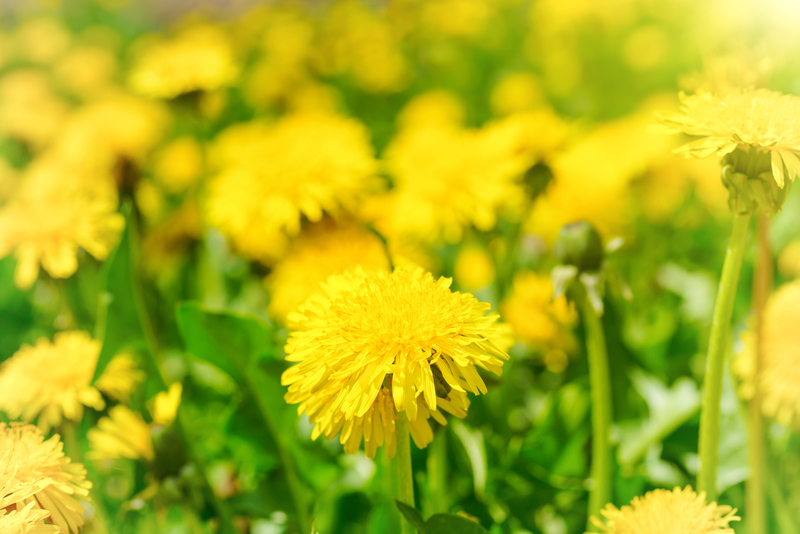How to Nurture Orchids and Enjoy Their Exotic Beauty
Posted on 05/09/2025
How to Nurture Orchids and Enjoy Their Exotic Beauty
Orchids, with their exquisite blossoms and fascinating shapes, captivate enthusiasts worldwide. However, the art of nurturing orchids can seem intimidating to beginners. In this comprehensive guide, you'll discover how to care for orchids, unlock their exotic charm, and turn your home into an orchid oasis.
The Fascinating World of Orchids
Renowned for their remarkable diversity and stunning flowers, orchids represent one of the largest and oldest plant families on Earth. With over 25,000 species and 100,000 hybrids, their alluring beauty and adaptability make orchids a favorite among houseplant collectors and gardeners.
Why Orchids Are Special
- Long-lasting blooms that can last from several weeks to months.
- Exotic patterns and colors, ranging from pristine whites to vibrant magentas and rare blues.
- Unique foliage and fascinating flower structures unlike any other plants.
- Symbolic meanings; in many cultures, orchids represent love, strength, and luxury.
If you're wondering how to enjoy your orchids to the fullest, it all starts with proper care -- from light and humidity to feeding and repotting. Let's dive in!

Choosing the Best Orchid Varieties for Beginners
While all orchids are enchanting, some species are especially suitable for newcomers. Ease your way into orchid cultivation with varieties that are both forgiving and abundantly beautiful:
- Phalaenopsis (Moth Orchid): The most popular and beginner-friendly option. They tolerate indoor conditions and reliably produce stunning flowers.
- Cattleya: Known for fragrant, showy blooms.
- Dendrobium: These orchids offer dramatic sprays and come in many sizes.
- Oncidium (Dancing Lady): Renowned for their dainty, dancing flowers and relative hardiness.
Essential Orchid Care: Creating the Right Environment
At the heart of successful orchid nurturing lies in replicating their native habitats. Most popular orchids are native to tropical or subtropical regions, thriving as epiphytes (air plants) on trees. Here's how to recreate these optimal conditions in your own home.
1. Light
- Bright, indirect light is vital. Direct sunlight can scorch leaves, while insufficient light hinders blooming.
- South or east-facing windows are ideal; if you only have west or north windows, supplement with a full-spectrum grow light.
- Signs of too little light: dark green foliage with no flowers. Too much: yellow leaves or brown tips.
2. Temperature
- Orchids generally prefer 65-80?F (18-27?C) during the day and 10-15?F cooler at night.
- Provide adequate air circulation to prevent overheating and minimize fungal issues.
3. Humidity and Airflow
- Most orchids thrive at 50-70% humidity.
- Increase humidity by placing pots on a tray of pebbles and water -- but make sure the roots aren't sitting in water!
- Use a small fan to encourage gentle airflow and prevent fungal growth.
4. Potting Media and Containers
- Orchids do not grow well in regular potting soil; they need a specialized orchid mix that usually contains bark, sphagnum moss, perlite, or charcoal.
- Choose pots with ample drainage holes to avoid soggy roots, which can cause root rot.
- Clear plastic pots help monitor root health and moisture.
Watering Orchids: Dos and Don'ts
Getting orchid watering just right is key to nurturing vibrant, healthy plants. Orchids are sensitive to overwatering, which is one of the most common mistakes new growers make.
- Only water when the potting medium is almost dry. Stick your finger about an inch into the media or use a wooden stick to check for moisture.
- Typically, watering every 7-10 days works for most orchids, but this depends on your home environment.
- Water thoroughly until it flows from the drainage holes. Let excess water drain off completely.
- Avoid letting water pool in the crown (where the leaves meet the stem) as this can cause rot.
- Use room-temperature, distilled, or rain water when possible, as tap water with salts or chlorine can damage sensitive roots.
Feeding Your Orchids: Fertilization Tips
To keep your orchids thriving and blooming, regular feeding is crucial. Orchids aren't heavy feeders, but when grown in bark or moss, they benefit from supplemental nutrition.
- Use a balanced, water-soluble fertilizer labeled "20-20-20" or a fertilizer specifically designed for orchids.
- Feed "weakly, weekly": dilute fertilizer to half or quarter strength and apply every 1-2 weeks during active growth (spring and summer).
- During fall and winter, reduce fertilization as plant growth naturally slows.
- Flush the potting mix monthly with plain water to remove fertilizer salts that can accumulate and damage roots.
Repotting Orchids for Long-Term Health
Knowing how and when to repot your orchids ensures they continue to flourish for years. Aim to repot every 1-2 years, or when you notice the potting mix breaking down or roots outgrowing the pot.
- Look for roots crawling out of drainage holes, foul odors, or the medium becoming mushy or compacted--it's time to repot!
- Best time for repotting is just after blooming or when new growth appears.
- Carefully remove the orchid from its pot, trim away any dead or rotting roots, and place in fresh, damp orchid mix.
- Wait about a week before watering to allow root wounds to heal.
Encouraging Blooms and Prolonging Their Beauty
Nothing is more rewarding than watching your orchid burst into bloom. By providing the right conditions and gentle care, you can help orchids flower year after year.
- Ensure adequate light -- insufficient light is the number one reason for orchids failing to re-bloom.
- If possible, expose orchids to slightly cooler night temperatures (by a few degrees) in late summer and early fall to trigger flower spikes.
- Keep the plant undisturbed while buds are forming. Avoid drafts and moving the pot abruptly.
- After flowers fade, trim back the spike on Phalaenopsis orchids to just above a visible node. This can sometimes encourage a second bloom.
Dealing with Common Orchid Problems
Even when you strive for perfection, issues may arise. Here's how to handle some of the most common orchid challenges:
- Yellow Leaves: Could result from too much sun, over-watering, or natural aging (old leaves will shed over time).
- Wrinkled Leaves: Sign of under-watering or root damage--inspect roots and adjust watering frequency.
- Buds dropping before bloom: Often stress-related; maintain consistent temperatures and humidity.
- Root Rot: Caused by overly wet conditions--repot with fresh mix and improve drainage.
- Pests: Watch for mealybugs, scale, and spider mites. Wipe leaves with a damp cloth and treat with insecticidal soap if needed.
Displaying and Styling Orchids for Maximum Impact
Part of the joy of enjoying the beauty of orchids is displaying them to best effect in your home or office.
- Cluster small orchids together for a tropical "mini-jungle" effect.
- Showcase large specimens as spectacular stand-alone centerpieces.
- Place orchids in decorative cachepots or baskets -- just ensure the growing pot allows for proper drainage.
- Hang orchids in baskets from the ceiling to mimic their epiphytic origins.
- Mix and match colors, heights, and types for dramatic arrangements.
The Rewards of Growing and Nurturing Orchids
There's no doubt -- successfully caring for orchids brings lasting satisfaction. Orchids reward their caretakers not only with exotic, long-lasting blooms but also with a heightened appreciation for the wonders of the plant world. Every new spike or flower is a celebration of patience, care, and nature's artistry.
Benefits of Growing Orchids
- Orchids purify air and add humidity, improving indoor environments.
- Learning about orchids fosters mindfulness and observation skills.
- They make memorable, eco-friendly gifts.
- Caring for orchids can connect you to a vibrant, global community of fellow enthusiasts.
Patience and observation are your best friends as you develop your green thumb with orchids. The journey of nurturing orchids is as rewarding as the result.

Frequently Asked Questions About Orchid Care
How often should I water my orchid?
Watering frequency depends on variety, pot size, potting media, and your home's climate. As a rule, water every 7-10 days, and never let roots stand in water.
Why isn't my orchid blooming?
Blooming problems are often due to insufficient light, improper temperature swings, or lack of rest period for the plant. Review your light source and seasonal care practices.
Can orchids grow outdoors?
In mild, frost-free climates, some orchid species -- especially Cymbidium, Dendrobium, and Cattleya -- can thrive outdoors in shaded, protected spots. Always acclimate gradually to prevent sunburn.
Conclusion: The Art of Nurturing and Enjoying Orchids
With the right approach, nurturing orchids transforms from a challenge into a joyful passion. By understanding their unique needs and providing optimal conditions, you'll soon enjoy lush leaves, strong roots, and dazzling blooms.
Ready to start your own orchid journey? Choose a beginner-friendly variety, prepare your space, and watch as the exotic beauty of orchids elevates your home.
For those who persist, caring for and enjoying orchids becomes a lifelong adventure, offering continuous learning and the irresistible reward of breathtaking flowers.
Nurture your orchids, and they'll nurture your soul in return!

